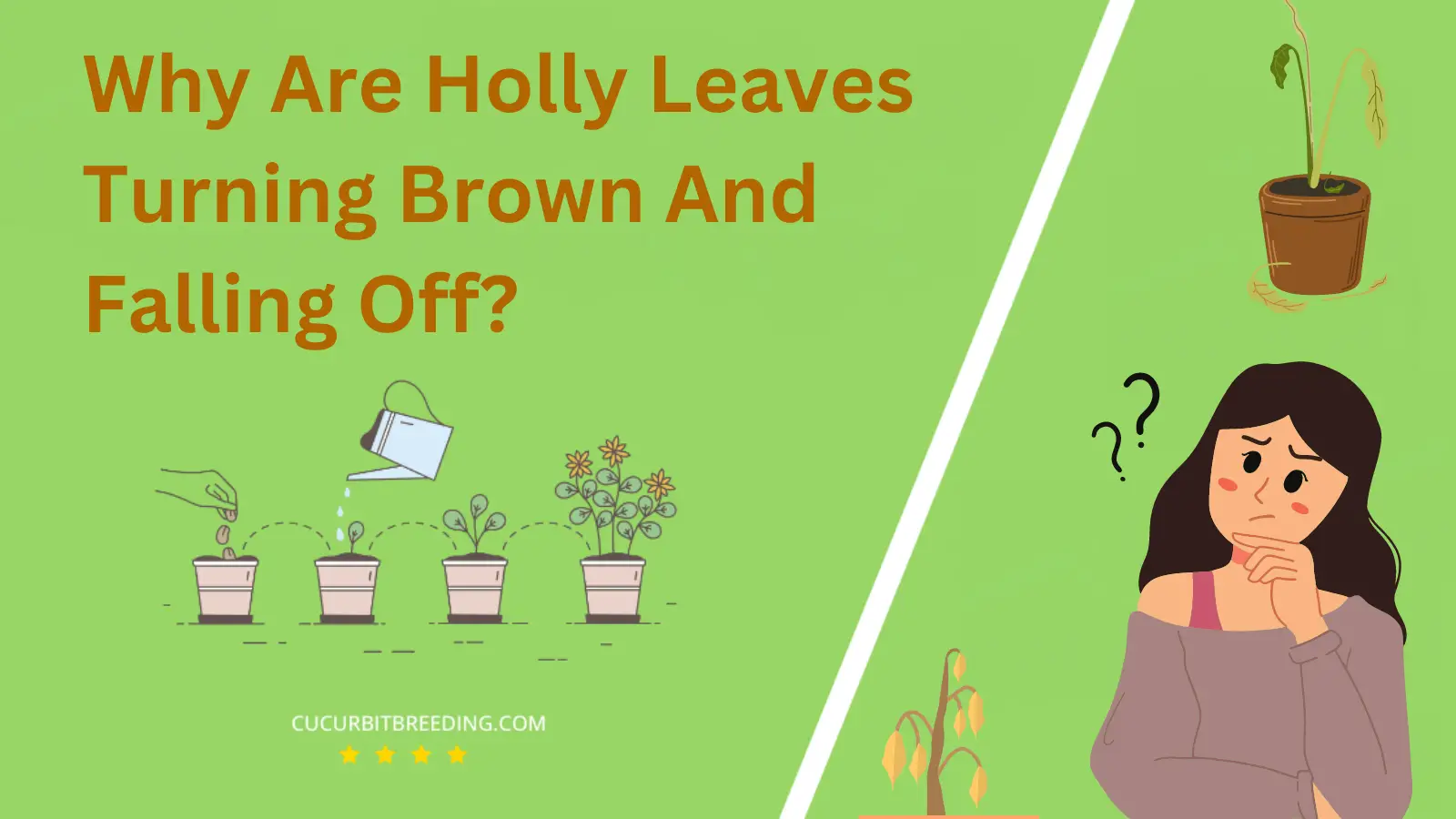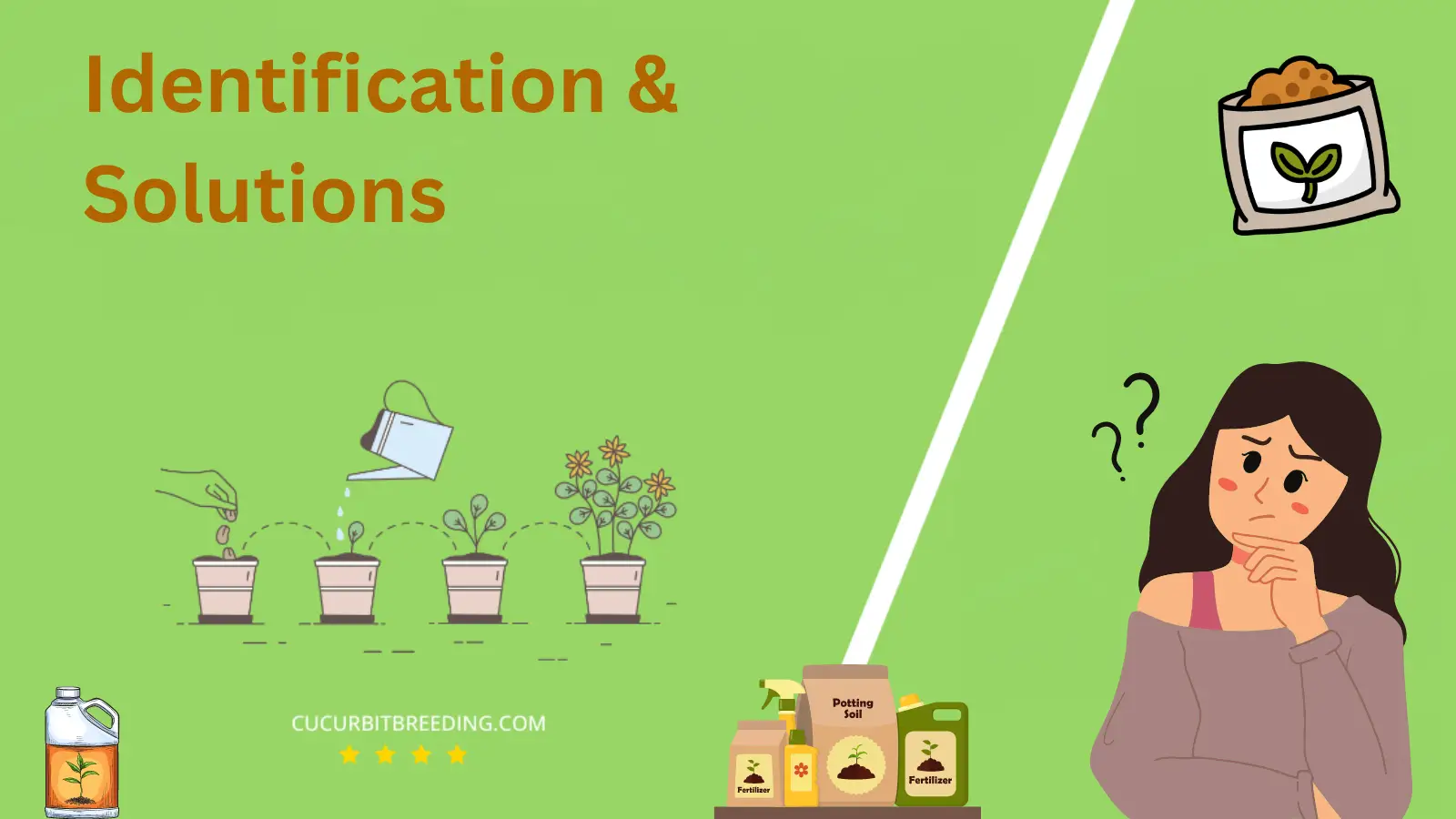
There’s something genuinely dismaying about looking out your window and seeing your beautiful holly bush leaves turning brown and falling off.
Does that mean irreversible damage? Is your cherished plant succumbing to some obscure disease, or is it something else entirely? We explore this horticultural mystery together, delving into the heart of garden care to keep those green spaces thriving.
Why Are Holly Leaves Turning Brown And Falling Off?
Holly leaves may turn brown and fall off due to problems caused by environmental conditions, insect infestations, or diseases. Extreme temperatures, drought, improper watering, or poor soil conditions can stress the plant, resulting in browning leaves. Additionally, insects like spider mites or leaf miner larvae can cause damage to the leaves. Likewise, plant diseases like holly leaf spot, canker, or root rot can manifest in discoloration and leaf drop. Further reading can provide a more detailed breakdown on holly care.
1. Environmental stress
| Description | Environmental stress causes holly leaves to turn brown and fall off due to physiological changes. |
|---|---|
| Solution | Water the plant regularly to prevent drought stress, ensuring the soil remains consistently moist but not waterlogged. |
Environmental stress can cause holly leaves to turn brown and fall off. When exposed to extreme temperatures, drought, or excessive sunlight, holly plants may struggle to maintain their normal leaf color and vitality. Additionally, poor soil conditions, such as nutrient deficiencies or improper pH levels, can also contribute to leaf discoloration and shedding.
To address this issue, it is crucial to ensure that the holly plants are provided with optimal growing conditions. This includes planting them in well-draining soil and providing regular watering to prevent drought stress. Applying a layer of organic mulch around the base of the plant can help retain moisture and regulate soil temperature.
Additionally, using a balanced fertilizer specifically formulated for holly plants can help correct any nutrient deficiencies. By addressing these environmental factors and providing the necessary care, the holly leaves can regain their healthy green color and reduce the occurrence of browning and falling off.
2. Lack of water
| Description | Insufficient water supply causes holly leaves to dry out, turn brown, and eventually drop off. |
|---|---|
| Solution | Increase watering frequency to provide adequate moisture for the plant’s survival. |
The reason why holly leaves are turning brown and falling off is due to a lack of water. When a holly plant does not receive enough water, it becomes stressed and unable to maintain the health of its leaves. As a result, the leaves start to dry out, turn brown, and eventually fall off.
To address this issue, it is crucial to ensure that the holly plant receives an adequate amount of water. Regular watering, especially during dry periods, is necessary to keep the soil consistently moist. Additionally, adding a layer of mulch around the base of the plant can help retain moisture and prevent water evaporation.
Proper irrigation practices will help keep the holly leaves green and prevent them from turning brown and falling off.
3. Disease or pest infestation
| Description | Disease or pest infestation causes holly leaves to turn brown and fall off. |
|---|---|
| Solution | Apply an organic fungicide or insecticide to prevent disease or pest infestation, ensuring proper plant care. |
Disease or pest infestation can cause holly leaves to turn brown and fall off. This issue affects the overall health and appearance of the plant. When a disease infects the holly plant, it weakens the leaves, causing them to turn brown and eventually drop. Similarly, pests like mites, scale insects, or leaf miners can damage the leaves, leading to browning and shedding. To address this problem, it is essential to identify the specific disease or pest infestation affecting the holly plant. Once identified, appropriate treatments such as fungicides or insecticides can be applied to eliminate the problem. Regular monitoring and proper maintenance practices, including pruning infected branches and providing optimal growing conditions, can also help prevent further infestations and promote healthy foliage growth.
4. Over-fertilization
| Description | Disease or pest infestation causes holly leaves to turn brown and fall off. |
|---|---|
| Solution | Apply an organic fungicide or insecticide to prevent disease or pest infestation, ensuring proper plant care. |
Over-fertilization can cause holly leaves to turn brown and fall off. When plants receive an excess amount of fertilizer, it can lead to a build-up of salts in the soil, which can impede the plant’s ability to absorb water and nutrients properly. This imbalance can result in leaf discoloration and eventual leaf drop. To address this issue, it is recommended to leach the soil by thoroughly watering the plant to flush out the excess salts. Additionally, reducing or adjusting the amount of fertilizer applied to the holly plant will help prevent over-fertilization and promote healthier foliage. Regularly monitoring the soil’s nutrient levels and following proper fertilization guidelines will ensure the plant receives adequate nutrition without causing harm.

5. Excessive heat or cold
| Description | Apply an organic fungicide or insecticide to prevent disease or pest infestation, ensuring proper plant care. |
|---|---|
| Solution | Provide consistent temperature and ensure it remains within suitable range to prevent browning and leaf drop. |
Excessive heat or cold can cause holly leaves to turn brown and fall off. When exposed to extreme temperatures, holly plants may experience stress, leading to leaf discoloration and shedding. The high temperatures can cause the leaves to lose moisture rapidly, resulting in dehydration and browning.
Similarly, freezing temperatures can damage the plant’s cells, leading to leaf discoloration and eventual shedding. To address this issue, it is essential to provide proper protection to holly plants during extreme weather conditions. Shielding the plants from direct sunlight and providing shade can help prevent excessive heat stress. Additionally, during cold spells, covering the plants with a frost cloth or moving them to a sheltered location can protect them from freezing temperatures.
Regular watering and mulching also aid in maintaining adequate moisture levels and temperature regulation for holly plants, reducing the risk of leaf browning and falling off.
6. Improper pruning
| Description | Improper pruning causes holly leaves to turn brown and fall off due to disrupted nutrient flow. |
|---|---|
| Solution | Proper Pruning: Trim affected branches in early spring to promote healthy growth and leaf retention. |
Improper pruning can cause holly leaves to turn brown and fall off. When holly plants are pruned incorrectly, it can result in the removal of too many leaves or branches, disrupting the plant’s natural growth pattern. This can lead to stress and damage to the remaining leaves, causing them to turn brown and eventually fall off.
To address this issue, it is important to follow proper pruning techniques for holly plants. This includes avoiding excessive pruning, ensuring clean and sharp pruning tools are used, and pruning during the appropriate time of year.
By adhering to these practices, the holly plant can maintain its health and prevent the leaves from turning brown and falling off.
7. Nutrient deficiency
| Description | Insufficient nutrients cause holly leaves to turn brown and ultimately fall off. |
|---|---|
| Solution | Apply a balanced fertilizer with appropriate nutrients to prevent holly leaves from turning brown and falling off. |
The reason why holly leaves are turning brown and falling off is due to a nutrient deficiency. When the plant lacks essential nutrients, such as nitrogen, iron, or magnesium, it can lead to browning and shedding of leaves. This deficiency affects the overall health and vitality of the plant, making it more susceptible to diseases and pests.
To address this issue, it is important to provide the plant with the necessary nutrients. Fertilizing the soil with a balanced fertilizer specifically formulated for holly plants can help replenish the lacking nutrients. Additionally, ensuring proper watering and drainage, as well as regular pruning to remove dead or diseased branches, can also contribute to the plant’s overall health and prevent further leaf browning and dropping.